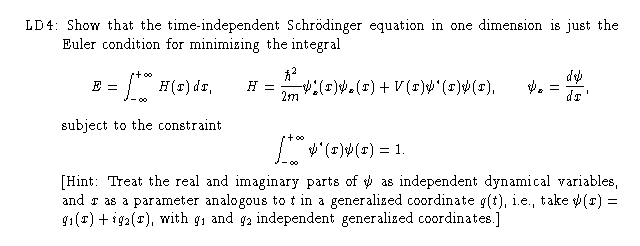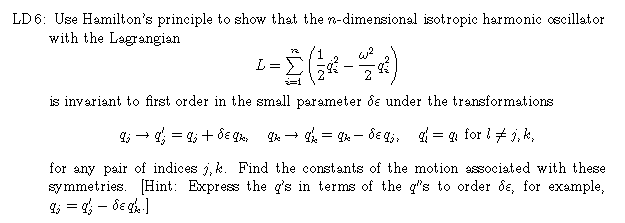2.11: Use polar coordinates with the angle measured from the top of the hoop to describe the motion. Suppose that the particle has a nonzero angular velocity initially, and find the general solution for the angle at which it leaves the hoop. Conservation of energy will be useful in the solution.
| This problem gives an example of a bifurcation of solutions, dynamical symmetry breaking, or of a dynamical phase or state transition in which an initially stable "vacuum" (the lowest energy state of the system) becomes unstable and replaced by a new stable vacuum state. The original solution remains as an unstable equilibrium. The words used in this description indicate some of the other places in which phenomena of this type are important. |

 is an example of a field, a continuous function of a spatial
coordinate x (and the time in general).
is an example of a field, a continuous function of a spatial
coordinate x (and the time in general). 
